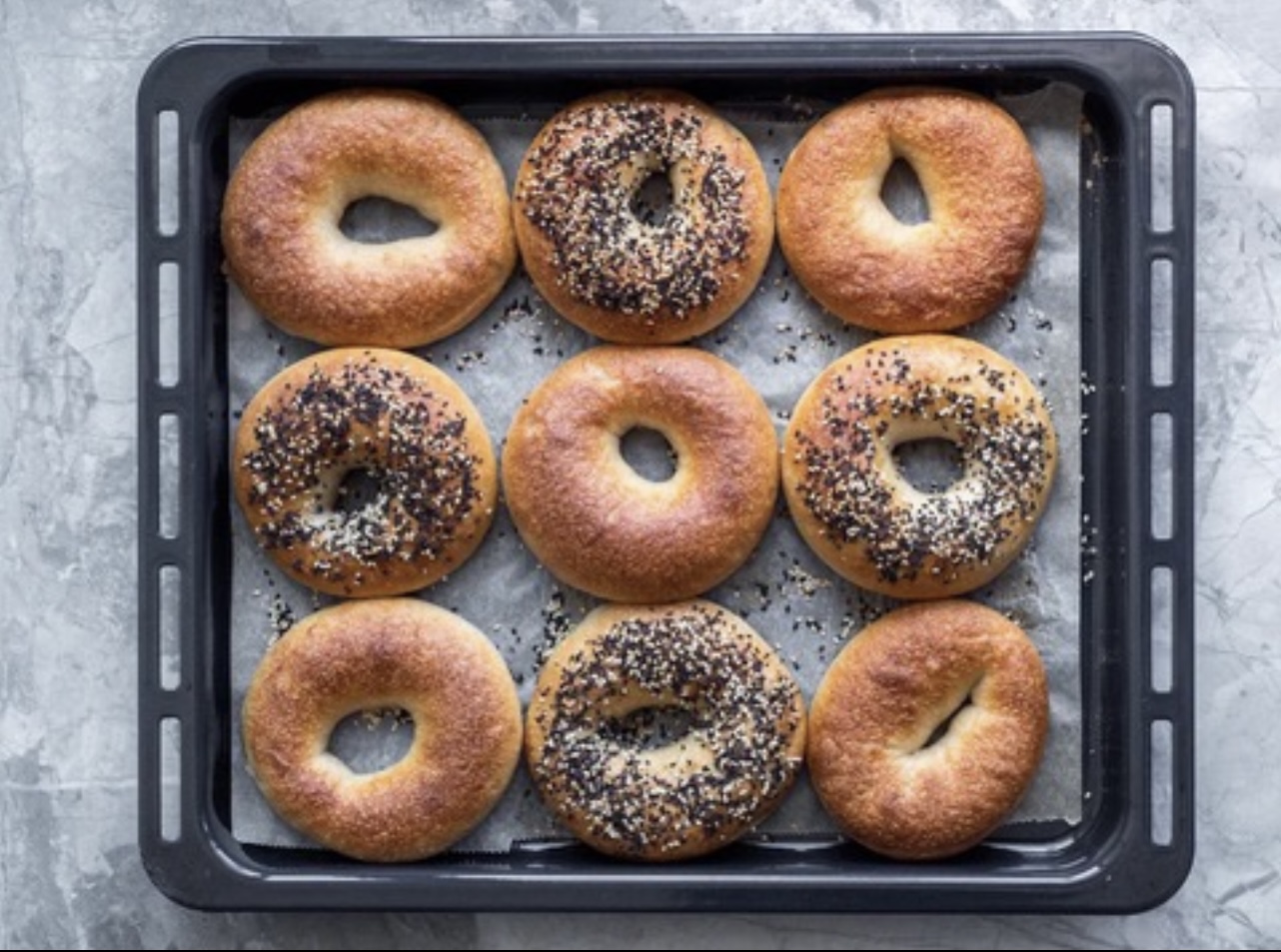Chewy Dough with a Hole: Southeast Asia vs Britain
As a breadaholic, a slice of plain baguette or sourdough can make my day. Among all different kinds of bread, bagels are my favourite. Therefore, since I arrived in the UK from Hong Kong in September, I have tried a wide range of packaged bagels sold in supermarkets, as well as the freshly baked ones in cafes and bakeries. I am profoundly amazed by how different Southeast Asian and British bagels are. A bagel is much more than a round bread with a hole in the middle.
Stuffed vs Filled
Back in the 17th century, the Jewish people in Poland usually ate bagels without any filling. It was a pleasantly simple street food. Later, it was brought to the United States by immigrants. Then, the New York-style bagel with various toppings like cream cheese, and sliced onions were developed. Heavily influenced by American culture, most Brits eat bagels in this way. The bagels are usually filled with smoked salmon, salted beef, bacon, lettuce, tomato, etc, like sandwiches and burgers.
Thanks to globalisation, many Southeast Asians eat the New York-style filled bagels too. However, ‘stuffed bagel’ has been more popular in recent years. They are not cut into half, and the fillings are stuffed into the dough before being boiled and baked. Smashed taro, cream cheese, chocolate spread, meat floss, sliced chicken – literally everything can be put inside.
A stuffed bagel is perfect as you need to trade off scrumptiousness, for convenience
In my opinion, the different consuming and living cultures contribute to this difference. In Taiwan and Hong Kong, buying baked goods online is popular. Many bagels are collected by customers at specific spots, like rail station entrances, or even delivered by air freights. Perfect outlooks of bagels with thick layers of fillings can hardly be maintained after the long traffic. Besides, many Southeast Asians do not have time to sit down to enjoy cosy breakfasts, due to the fast living pace. Thus, a stuffed bagel is perfect, as you need to trade off scrumptiousness for convenience. Even when you are rushing on the street, you can hold it in one hand, and enjoy rich tastes and textures in just a few quick bites.
Tastes
In Britain, plain, wholemeal, seeded, and cinnamon bagels are the most common. Although there are some special flavours like cheese and dried tomato, the bagel itself is rarely the protagonist. The taste of bagels is mild so that the fillings can be highlighted. Savoury bagels usually partner with meat and vegetables, while spreads like jam, Nutella, and peanut butter are often seen in the sweet ones. They are all common toppings on toasts.
In Southeast Asia, the flavours of bagels are polarised, such as coffee, matcha and black sesame. The variety of the fillings is even wider. Apart from the aforementioned fillings, complete slices of mandarin orange and pumpkin can be stuffed inside the bagels too. Therefore, the bagels can be tangy, creamy, or fruity depending on what is stuffed inside them.
Although both British and Southeast Asian bagels are perceived as the main meal, they are developed into two completely different styles. The British bagel is developed into a substitute for burger buns and sliced loaves. Therefore, there are conventional breakfast and lunch compositions, like ‘BLT’ and sliced beef with mustard. Contrastingly, the Southeast Asian bagel becomes a mixture of main meal and dessert. Thus, there are common dessert combinations, like matcha with red bean and chocolate orange, as well as additions like sponge cake bites and mochi.
Textures
While the texture of bagels is usually described as ‘chewy’, the chewiness of Asian and British bagels are different. Affected by New York bagels, the British ones are chewy, with tough or even crispy crusts. Besides, the crumbs are dry, so they are well-balanced with the juicy fillings and spread, such as pickles, tomato slices and ketchup.
The Southeast Asian bagels are chewy in a different way, and I will describe them as ‘tenderly chewy’. Although there are cafes selling New York bagels, I think most of them are more elastic. It means that after being squeezed, they can slowly rebound to the original shape. The inner part is more moist too.
Reasons for the difference are complicated because the texture of bread is determined by the cooking method. On account of the different types of flour, Southeast Asian bread is generally softer than European bread. Many bakeries also change the recipe in order to accommodate the taste of Southeast Asians. Furthermore, the reheating method matters. Americans and Europeans usually reheat the bagels in the oven. It not only makes their surface crunchy, but also dehydrates the crumb. Nevertheless, there are a vast range of reheating methods in Southeast Asians, and steaming is a popular one. It preserves the inner moisture, creating the tender and elastic texture. Some even bake their bagels for a few minutes after steaming, so that they are crunchy outside and soft inside.
The features of different kinds of bagels are much more than that, and there are still a lot more things to discover in the vast world of bread. This morning, I had a bagel for breakfast again. The spice of cinnamon gradually came out while chewing, and the raisins are extra juicy after steaming. In the empty kitchen, the air was warm with a hint of sweetness. It’s a sunny day. It’s Happy Friday. It’s just perfect.

Comments